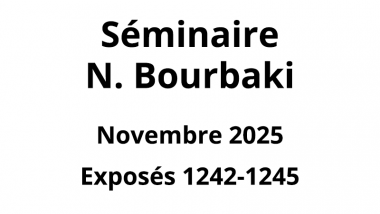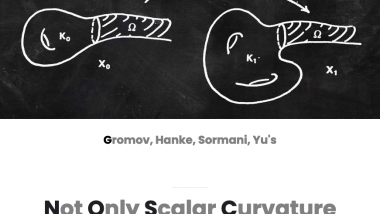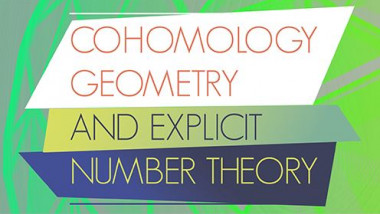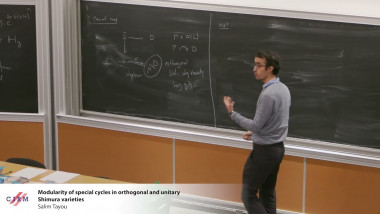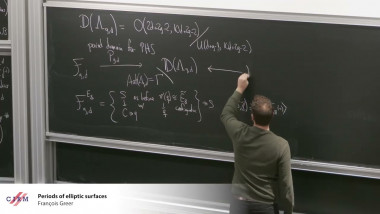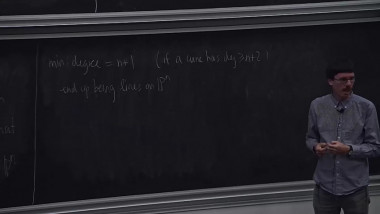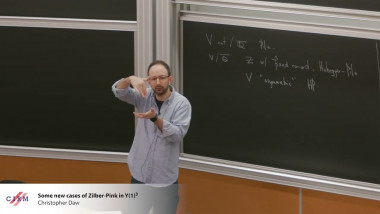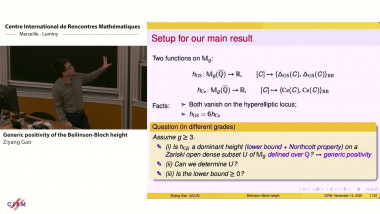Theta classes, $r$-KdV and $W$-constraints
Apparaît dans la collection : 2025 - T2 - WS1 - Higher rank geometric structures, Higgs bundles and physics
Witten’s conjecture, proved by Kontsevich, states that the generating series for intersection numbers on the moduli space of curves is a tau-function for the KdV integrable hierarchy. It can be reformulated as the statement that the descendant potential of the trivial cohomological field theory is the unique solution to a system of differential constraints that form a representation of the Virasoro algebra, known as Virasoro constraints. In this talk I will present a new generalization of this celebrated result. We study an interesting set of cohomology classes on the moduli space of curves, the $(r,s)$-theta classes, which form a (non-semisimple) cohomological field theory. (Here, $r$ is a positive integer greater than or equal to $2$ is a positive integer between $1$ and $r-1$.) These classes are constructed as the top degrees of the Chiodo classes and can be understood as a vast generalization of the Witten $r$-spin classes and the Norbury classes (the latter being the special case $r=2$, $s=1$). We show that the descendant integrals satisfy the "generalized topological recursion" of Alexandrov, Bychkov, Dunin-Barkowski, Kazarian and Shadrin on the $(r,s)$ spectral curve. As a consequence, we prove that the descendant potential is a tau function for the $r$-KdV integrable hierarchy, generalizing the Brézin-Gross-Witten tau function (the $r=2$, $s=1$ case). We also show that the descendant potential satisfies $W$-constraints: namely, it is annihilated by a collection of differential operators that form a representation of the $W(\mathfrak{gl}_r)$-algebra at self-dual level. Interestingly, the $W$-constraints uniquely fix the potential only in the cases $s=1$ and $s=r-1$.
This is joint work with N. K. Chidambaram, A. Giacchetto and S. Shadrin.
